Search Results for Tag: Everest
Time bomb Imja Tsho defused – for now
It’s like handling a water butt. The amount of rainfall is not manageable. If you want to prevent the butt from overflowing, you must drain the water. According to this model, the water level of Imja Tsho has now been lowered by a total of 3.40 meters over a period of two months. The glacial lake in the Everest region, which is almost 150 meters deep in some places, has steadily expanded over the last few years as a result of climate change, and has become a threat to the downstream villages, especially the nearby located Chukhung and Dingboche. A bursting of the natural dam at an altitude of about 5,000 meters could have devastating consequences. Soldiers from the Nepalese army were involved in the construction work for the canal, via which a total of four billion liters of water were drained. According to the government in Kathmandu, “an estimated 96,562 people, including tourists” – for this exact estimate Nepal earns an entry in the Guinness Book of Records 😉 – are expected to benefit from the project, which cost about three million US dollars and was funded by the United Nations. Daene McKinney, professor of Environmental and Water Resources Engineering at the University of Texas at Austin, was on site and has replied to my questions.
Professor McKinney, you were involved in the Imja Lake lowering project in the Everest region. How dangerous did you assess the situation before starting to drain the water?
![]() read more
read more
Checkmate at Annapurna summit
It sounds like an April fool’s joke with a month’s delay. Before the German Jost Kobusch – as reported – reached the 8,091 meter-high summit of Annapurna on 1 May, he, according to his own words, played a game of chess against the Israeli climber Nadav Ben-Yehuda just below the highest point. “We had previously played at least two games every day at Base Camp during the periods of bad weather,” says Jost. So the idea of a chess duel at the top was born. Nadav, who used bottled oxygen, reached the highest point just before Jost, who climbed without breathing mask. “When we met just below the summit, I said to him: Wait! We still have to play a game of chess,” the 23-year-old German tells me. “We played on my smartphone, 20 meters below the summit.”
![]() read more
read more
Mingma Sherpa: “It was my worst mistake”
No trace of euphoria. On Wednesday last week, Mingma Gyalje Sherpa reached – as reported in my blog – the 6,685-meter-high summit of Chobutse in Rolwaling Valley in Nepal, solo climbing and for the first time via the West Face – a milestone in the history of Sherpa climbing. But instead of being cheerful the 29-year-old is simply happy that he survived his solo ascent.
Mingma, you have already been on top of Mount Everest, K 2 and five other eight-thousanders. How challenging was your solo ascent on Chobutse?
I have climbed Everest with bottled oxygen and the other six 8,000-meter- peaks without the use of oxygen. When I climbed these high mountains, I did it with partners and on routes with fixed ropes. But a solo ascent means climbing alone in free style, there isn’t any fixed rope or climbing partner to save you if you make a mistake. A mistake means the end of your life. So it is itself challenging. It took me three years to decide to go for a solo climb. Finally, I made it this year. Climbing Chobutse was my worst decision and mistake. I almost lost my life. After my summit success, I spent two nights and days without food, water or tent. I spent two threatening nights and a day at the same place in a whiteout waiting for the weather to clear up. My only satisfaction is that I made it to the summit, though it was the hardest climb of my life.
![]() read more
read more
Dalai Lama: Climate change threatens roof of the world
200 meters as the crow flies away from my desk, nothing less than the future of the planet is negotiated. Until Friday representatives from around the world are debating at the World Conference Center Bonn on a new climate agreement. It is to be adopted at the global climate talks in Paris, which will begin in late November. Once again the negotiations are long and tough. The solidarity with the states that are already feeling the effects of climate change is within limits. In most cases economy beats ecology. But the clock is ticking. With only a few exceptions, glaciers are melting worldwide. Glacier Works, an organization founded by US mountaineer David Breashears in 2007, has impressively documented how far for instance the glaciers around Mount Everest have retreated during the past decades. Now the Dalai Lama has pointed to the consequences of climate change for his Tibetan homeland.
![]() read more
read more
Get ready to trek to Everest!
A cautious all-clear for the Everest Base Camp trail. “None of the major suspension bridges appear to be affected by new geotechnical hazards as a result of the earthquake”, says the report of a group of mountain guides and engineers of the US based agency Miyamoto International which is specialized on earthquake damage. “Much of the trail and most of the rock retaining walls (both above and below) the trail are undamaged. We have observed very little foundation damage to buildings.” At the end of June the team had assessed the condition of the trail from the village of Lukla to Everest Base Camp after the devastating earthquake of 25 April and the aftermaths. 83 percent of the observed lodges and houses were given a green tag, meaning that they were undamaged or hardly affected. And the others?
![]() read more
read more
Nepal hopes for comeback in fall
“Come back! So that Nepal can make a comeback.” So you could overwrite the appeals of those who are living from tourism in Nepal or have to do with it. The trekking and expedition operators from abroad send a signal that they want to realize most of their trips that they had planned for the post-monsoon season before the earthquake hit the country on 25 April. “The devastating earthquake has shaken the life in Nepal, but slowly life is returning to normality”, Dominik Mueller, head of German operator Amical alpin, wrote.
![]() read more
read more
Russell Brice points the finger
He kept silent for weeks, but now he has found very clear words. “This is my 20th year of operations for Himalayan Experience but never before have I experienced such a variety of emotions as I did this year” writes Russell Brice at the beginning of a five-part series of reports about what happened on and around Mount Everest this spring. At this point I can only sum up the content but you should really take time to read Russell’s first hand reports in its full length. The owner and expedition operator from New Zealand was at Everest Base Camp when the devastating avalanche went down over the Khumbu Icefall and killed 16 Nepalese climbers on 18 April. “It appears that there was already a traffic jam in this area at the time of the avalanche, so it is not surprising that there were so many killed and injured.”
![]() read more
read more





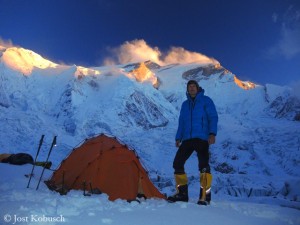
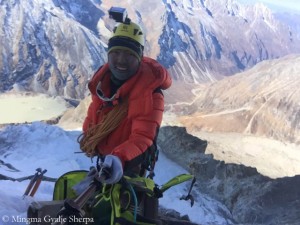
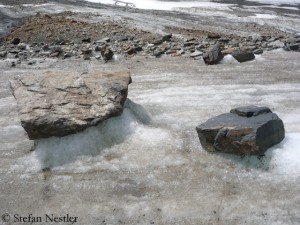
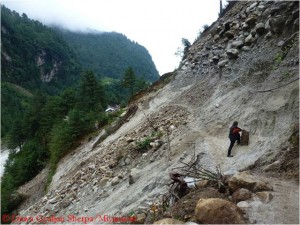

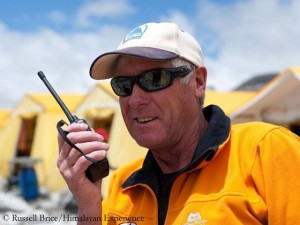

Feedback